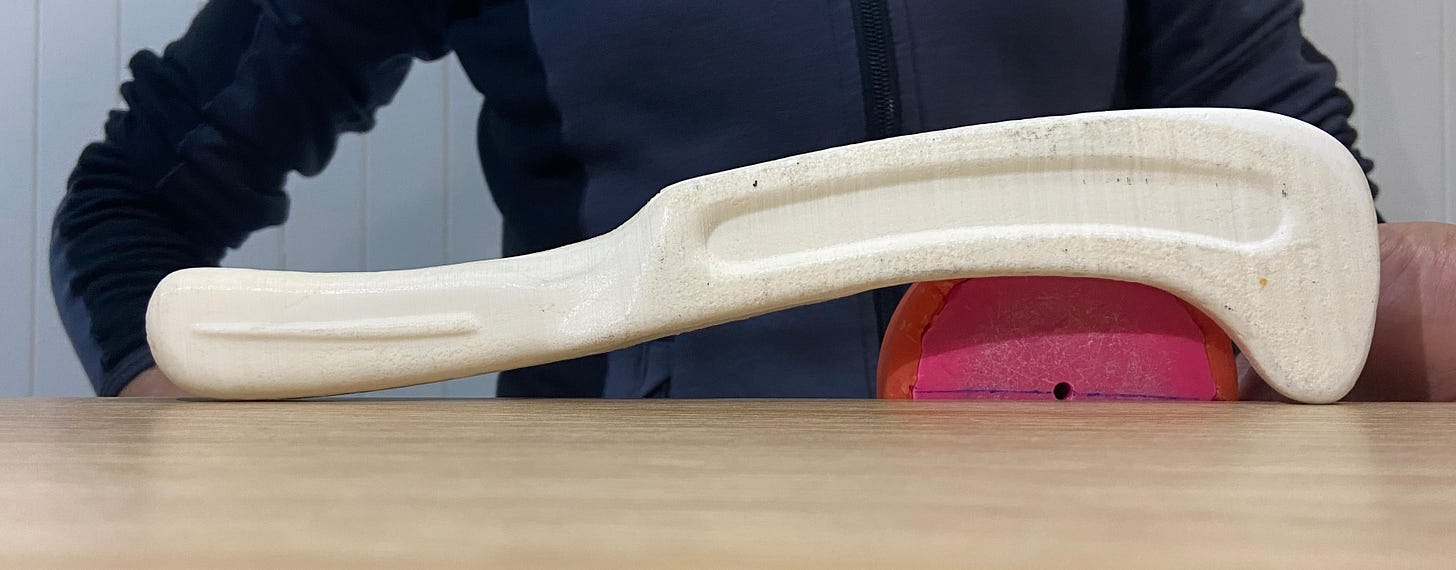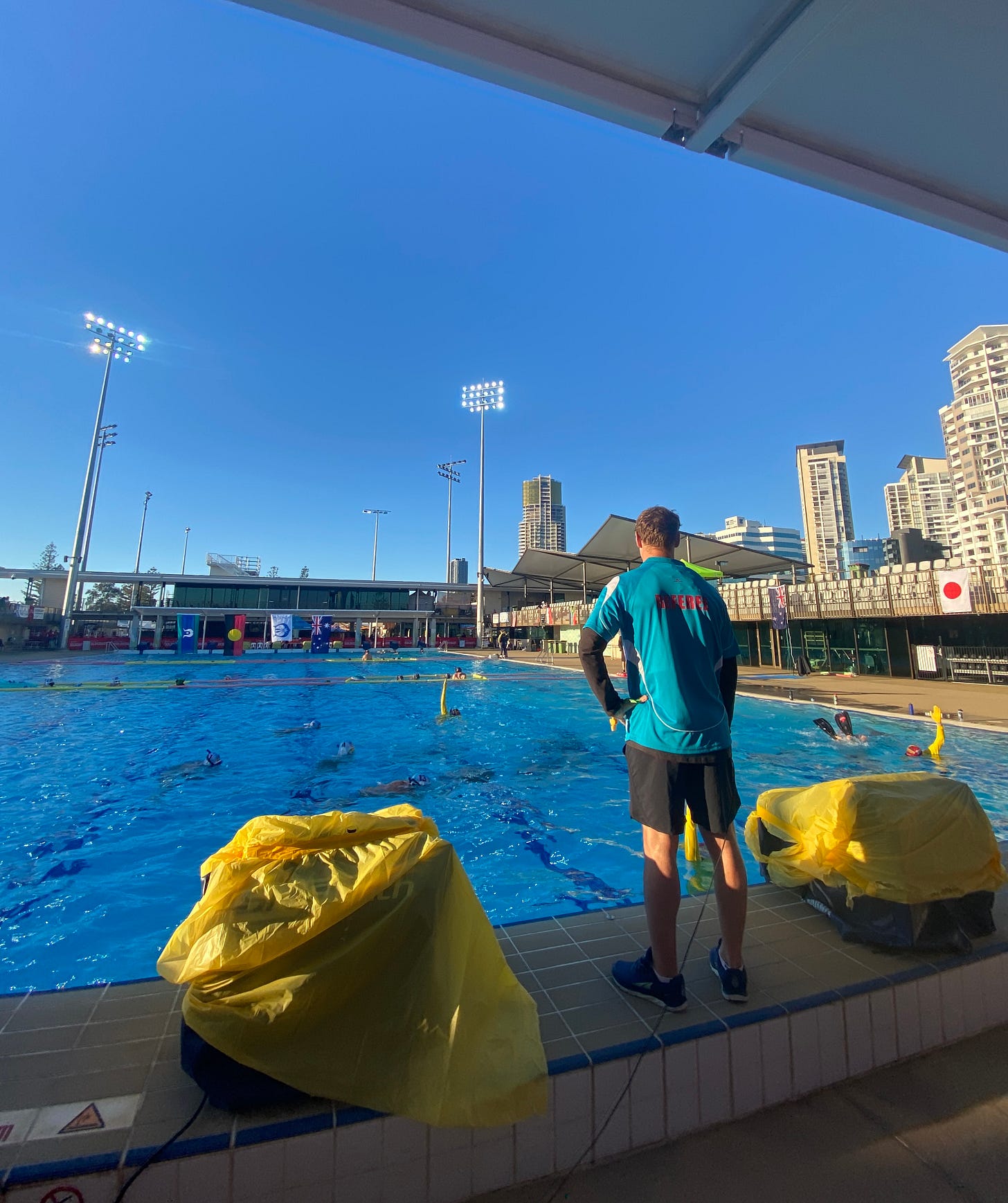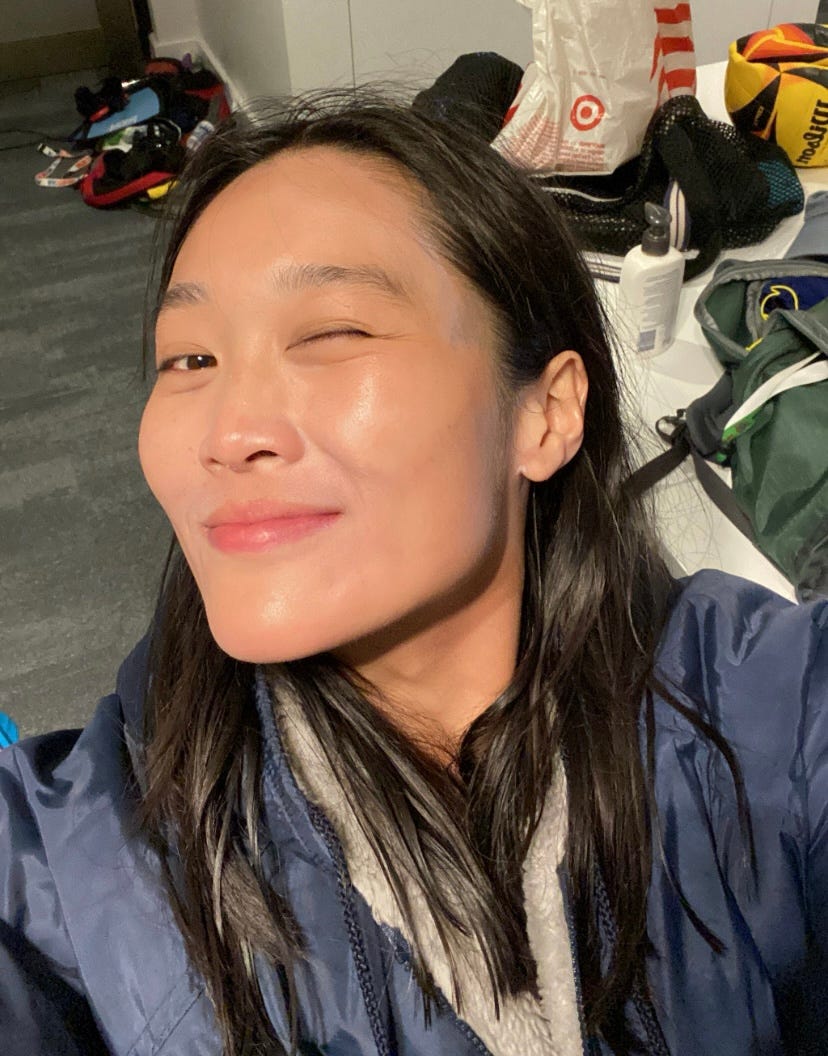Hello from Day 5 of games! I was in a morning shift the first 3 days, and am now swapped onto the afternoon shift. I had a free few hours this morning to stretch, write this post, and hang around Gold Coast with a coffee before my shift starts. For the rest of the day, though, I’ve been running running non-stop in and out of the water.
This post is some behind-the-scenes of equipment ruling, why gear check was done when it was, and the referee schedule. A longer read than previously, but insightful about what’s happening in the ref rooms.
Note: All information shared here is publicly available in official CMAS and tournament documents and tournament documents (link), or by common knowledge here at the tournament.
round robin
Quick rundown: this is World Championships, which is played in 4 divisions: Elite and Masters, both separated into Men and Women divisions.
The tournament begins by seeding teams into their initial rankings through a round robin, where every team will play every other in their division. The seeding is important for future games since it allocates which matches occur during playoffs.
But, as Uncle Terry said in his Substack blog (read here: uncleterry.substack.com), seeding is definitely not the end-all-be-all. Relative rankings change fast.
The round robin kicked off on Saturday, and the four referee teams were allocated into either a morning (7a-noon) and afternoon (noon-8p) shift. And, in any hockey fashion, in Day 1, things already got pretty crazy.
hurdle no. 1 — stick and hooks
Usually, a gear check is performed before game start. Referees need to deny any dangerous or illegal equipment from being used in the match. The referee team were aware that a number of sticks brought to this tournament would have questionable rule compliance.
Note: This rule in question is CMAS International Rules v12, Section 3.3.9.3. From my understanding, the interpretation of this rule has been repeatedly debated at previous Worlds but its wording was never formally adjusted for clarity.
The referee team then had to devise a way to verify the legality of sticks coming into the pool. The accepted method to ensure accuracy requires a table and a puck, as you can see in the picture — and it takes a long time. That leads us to hurdle no. 2.
hurdle no. 2 — gear check
The outdoor pool deck is brutal with the wind and cool temperatures, so we didn’t want to players out in the cold to do poolside gear check. We also needed a table to measure the puck and stick on. So, gear checks for Day 1 were done prior to warm-ups, 35 min before game start.
That turned out to be terrible. Gear check was time-consuming and required additional referees to be performing the check while others were in-game. The extra labor and time forced most of the referees to stay at the pool for at least 10 hours that day and up to 14 ;; (crying emote)
The referee team did some brainstorming and we were able to adjust gear check protocol. We’ve now reverted to poolside gear check, with a puck available at the timing desks to verify any questionable sticks.
hurdle no. 3 — referee numbers
This Worlds is the first to occur in 3 years due to, ya know, the global crises that have been ongoing 😀
While everyone is very happy to see it happen, Australia being the venue is also financially difficult for a lot of countries. Some countries opted to pay a fee rather than send a referee. This year, the fee was only 1500 AUD which is chump change compared to the travel cost to fly from, say, France or Colombia to Australia. Inflation is real ;;
The US referees are very fortunate to have a federation that is supporting a large portion of our travel costs. Each of us (Don, John, and I) had a travel budget of $2500, but to put it in context, flying from California (SFO) to Brisbane and back totaled $2600. And that’s on the lower end.
So, all this is to say that the referee team is short on refs. We have 38 teams this year and only 30 referees, with a large number of those being Australian or New Zealand referees. The schedule needs to be carefully built so that referees do not arbitrate their own country’s games.
The Competition Procedures document Section 2.5.4.5 requires 35 referees to accommodate 38 teams. Being short 5 referees is massive. I am a human being and need to eat, use the washroom, put on sunscreen, and mentally reset between games. Yesterday, my longest break was 15 minutes out of my 8 hour shift. In that time, I had to get out of my Water Ref gear, dry off, put on clothes, grab a snack + water, use the toilet, and get back in time to signal 30 seconds to match start. I’m happy to put in time, but please know that the referee team is working damn hard (voluntarily, without pay) to make sure we keep Worlds running.
Anyways, today was fun! Peep my mask tan coming on and the remnants of my sunscreen from today.
Tonight I’m meeting with my referee team assessors to get a preliminary star rating — more on that later. I’m pretty nervous, but excited to keep learning! I’m going to try to relax; wish me luck.
Until then, tune in to watch games on Youtube! The official schedule is here.






Thanks for your work!